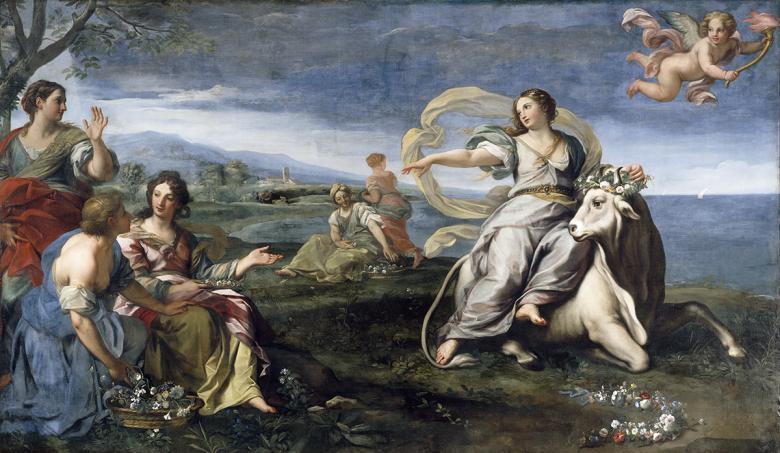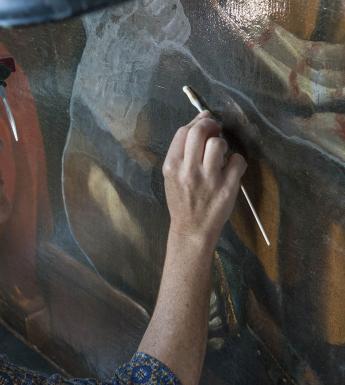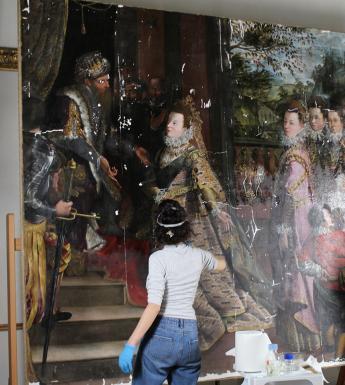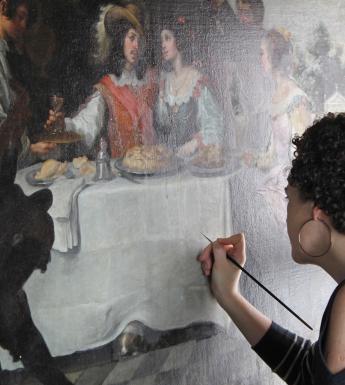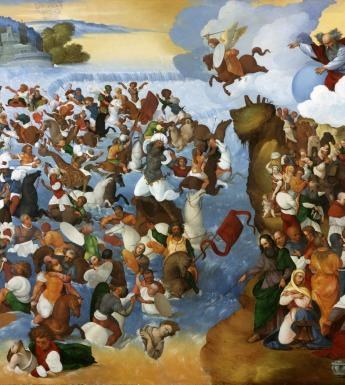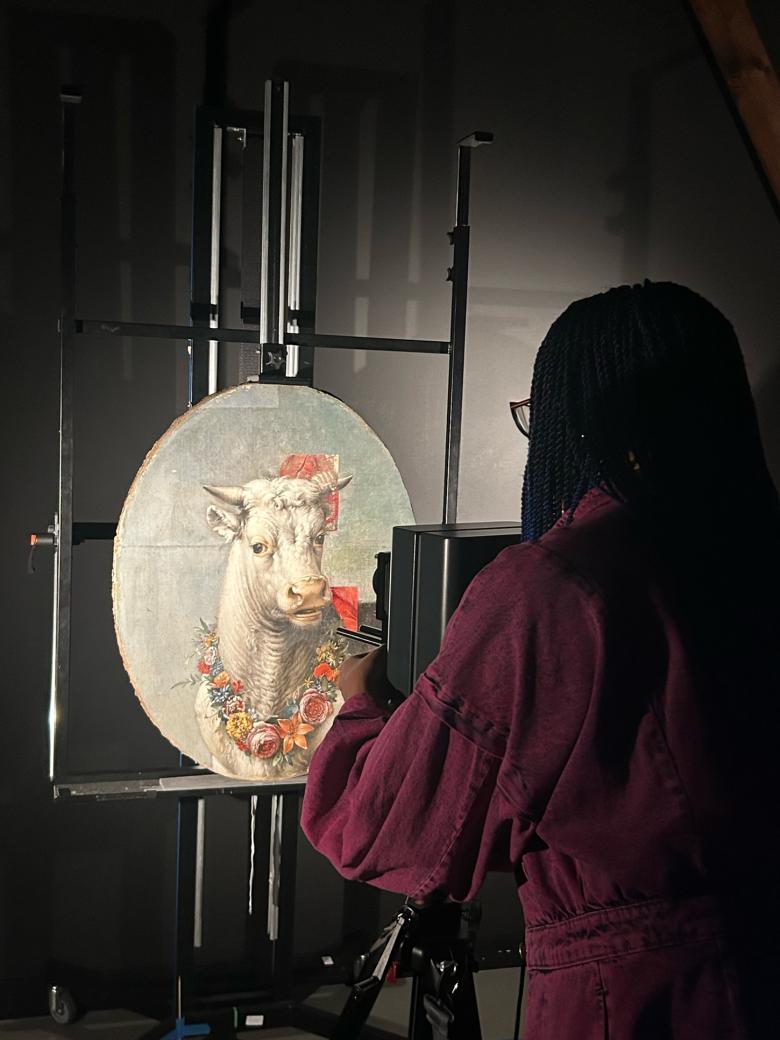
An exciting new conservation collaboration between the National Gallery of Ireland and the Mauritshuis in The Hague.
This collaborative project will delve into the world of the artist Paulus Potter (1625-1654). Potter’s Head of a White Bull (c.1650), which is part of the National Gallery of Ireland's collection, is undergoing research by a multidisciplinary team of conservators, curators and scientists.
Preliminary research has revealed that it is a fragment of a large painting by Potter that once depicted The Abduction of Europa. Remarkably, parts of this scene are beneath the painting’s surface and can be detected using scientific imaging. It will be studied alongside the iconic De Stier (The Bull, 1647) in the Mauritshuis’s collection, and in an exciting development, from 29 March 2024, visitors to the Mauritshuis will be able to follow in person the multi-analytical examination of De Stier and Head of a White Bull. The subsequent results will go on to inform a major restoration of De Stier in front of the public at the Mauritshuis over the next two years.
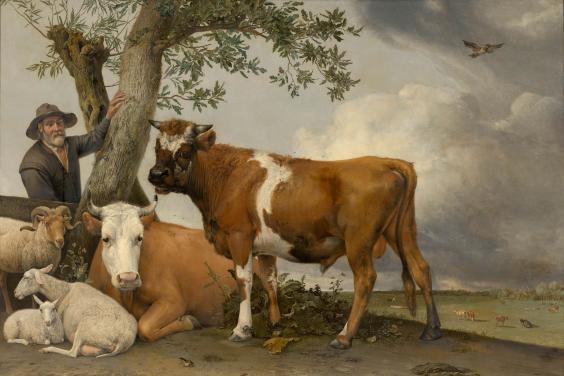
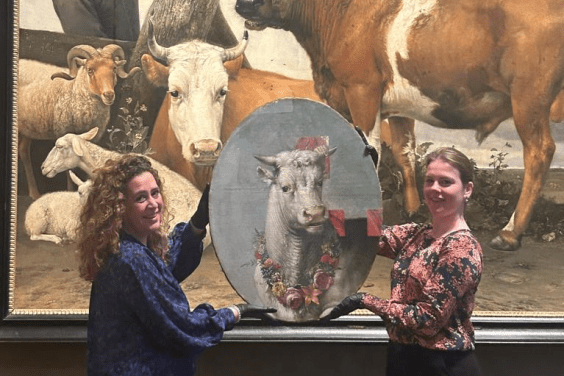
Who was Paulus Potter?
Paulus Potter was born in Enkhuizen in 1625. He received his initial training from his father, the painter Pieter Symonsz Potter. He entered the Delft Guild of St. Luke in 1646 and in 1649 joined the painters’ guild in The Hague. In 1652 Potter moved to Amsterdam, where in January 1654 he died at the early age of twenty-eight. In spite of his premature death he left an extensive oeuvre of nearly one hundred paintings, depicting mythological, biblical, hunting and genre scenes, as well as his famous paintings of animals like De Stier.
The Abduction of Europa: A Missing Work
There are a number of intriguing works mentioned during and directly after his lifetime which seem to be unaccounted for. Perhaps the most significant of these missing works is The Abduction of Europa, a painting first mentioned in the Dutch newspaper Ordinaris Dingsdaegsche Courant in May 1664 as one of three by Potter for auction: “... a Europa, on a wreathed white bull, six feet and seven and a half feet tall.” This large painting is listed in auction catalogues up until a Paris sale on 20 December 1785, but after this time it does appear again in any records.
Twenty-two years later, in 1807, a painting which had not been previously mentioned in relation to Potter, Jupiter in the Form of a Bull, appeared for sale at Christie’s, London. The painting was sold and passed through various collections until it was acquired by the National Gallery of Ireland in 1868. The painting - now retitled Head of a White Bull - depicts the head and shoulders of a young white bull who turns his head back in an animated fashion to look straight out of the picture; a wreath of painted flowers are suspended round his neck. This painting’s subject matter puzzled experts - in his1834 catalogue raisonné on Potter John Smith wrote: “It is difficult to decide whether Head of a White Bull was intended to represent the metamorphosed lover of Europa, a sacrificial offering, or a prize bull of Holland. It is a well-studied work, and is painted with a rich full body of colour.”
This painting was known as by Potter since it first appeared on the market in 1807. The attribution was, however, rejected by Pieter van Thiel (Director of the Department of Paintings at the Rijksmuseum from 1964-1991) when he visited the National Gallery of Ireland in 1968. A brief note from his visit states that Van Thiel suggested that the painting was perhaps instead the work of Jacob Cuyp (1594-1652); as a result, in subsequent catalogues it was recorded as an “imitator” of Potter. However, it is now believed that the painting is indeed attributed to Potter, and that it is also, most significantly, a fragment of the missing painting, The Abduction of Europa, which this research and conservation project will confirm.
The image below shows an example of a Europa painting from our collection, by the Italian artist Carlo Maratti (1625-1713). You can read more about it here.
Connections between The Abduction of Europa and Head of a White Bull
A preliminary study of the National Gallery of Ireland's painting Head of a White Bull has presented some enlightening results. Infrared reflectography (IRR) of the painting has revealed an overpainted torso of a woman sitting sidesaddle on the bull. The figure, which has been covered with a light blue sky colour to match the rest of the original background, is wearing a dress tied with a sash bound with what appears to be an ancient Roman fede brooch of clasping hands. Additionally, one of the figure’s hands is wrapped around the bull’s horn. Such a composition is typical of the iconography of The Abduction of Europa, as seen in Early Modern European art, and referenced in Ovid’s Metamorphoses (Europa is abducted “holding fast a horn with one hand”). In the National Gallery of Ireland's collection alone the painting’s composition is echoed in paintings by Carlo Maratti (above) and Paolo Veronese.
Use the swipe over feature below to look at the painting and its IRR photograph more closely, and see the cloak and the hand clasping the horn on the right.
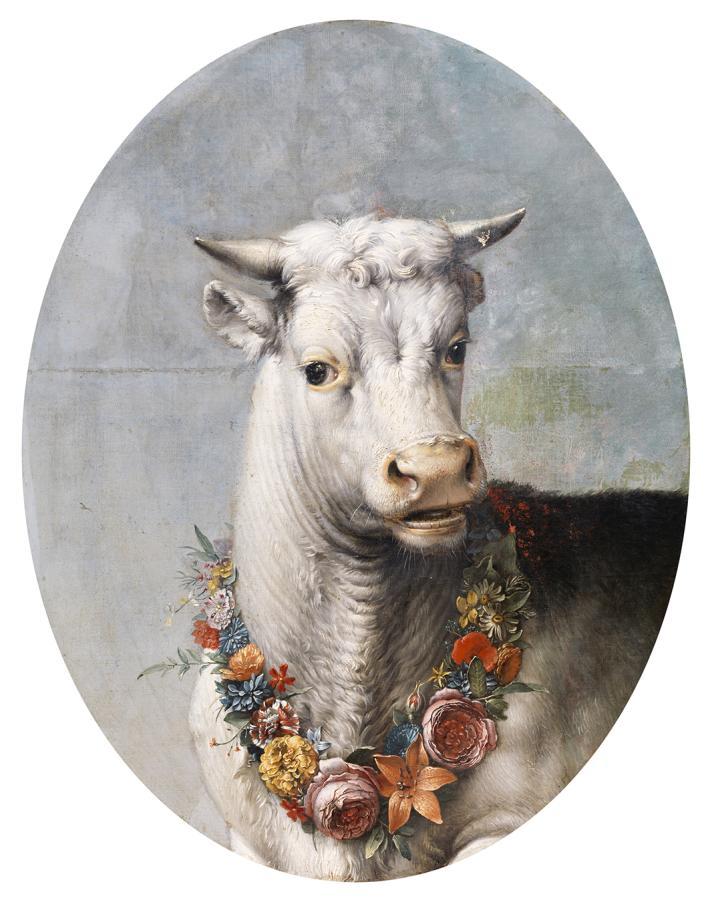
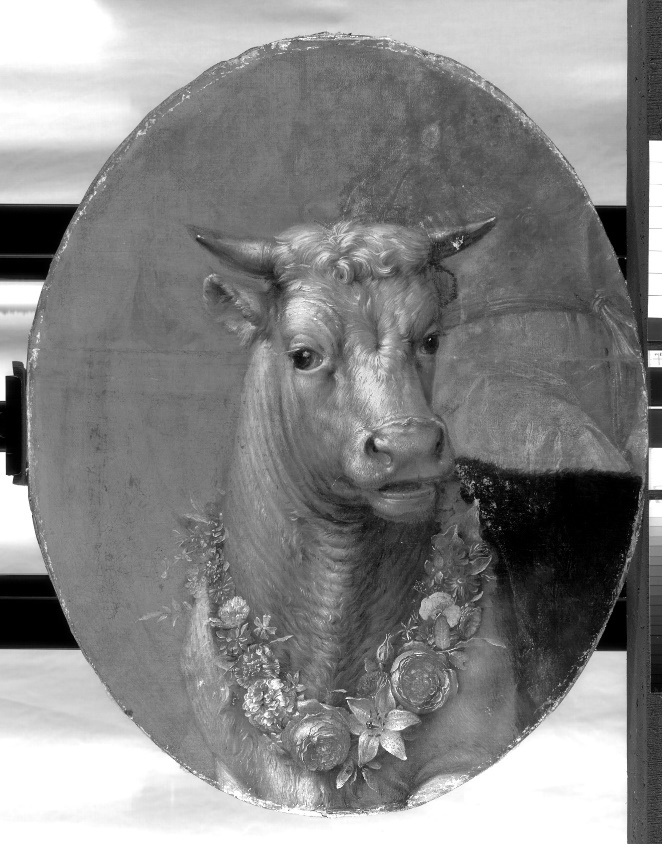
Next steps
The next steps of the research hope to reveal new information about Potter’s artistic techniques in addition to solving the puzzle of how and why the Dublin work has transformed over the centuries from a large-scale mythological scene to a head of a garlanded white bull. It will shed light on Potter's artistic process and create a dynamic platform for advancing the understanding of art by unveiling the intricacies of a previously unknown masterpiece. Existing material-technical research of the Mauritshuis painting De Stier will be studied against analysis of the National Gallery of Ireland's Head of a White Bull. This international collaboration will give the public a glimpse into the importance of collection care and technical art historical research.
We look forward to sharing the progress of this exciting collaborative project with you over the coming months.
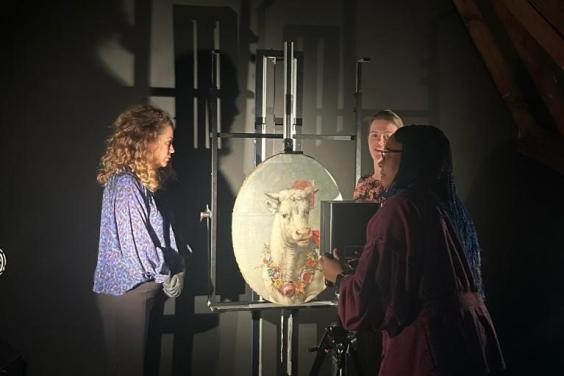
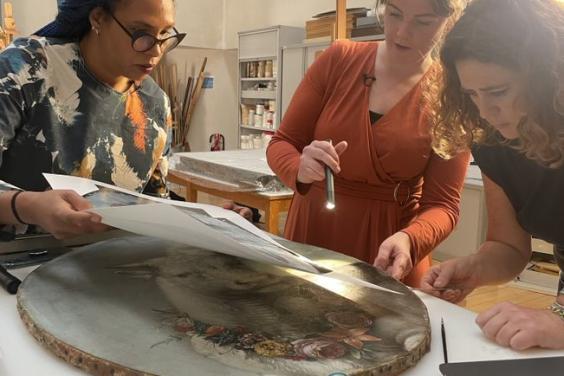
The White Bull Conservation and Research Project is a collaboration between the National Gallery of Ireland, Dublin, and the Mauritshuis, The Hague.



